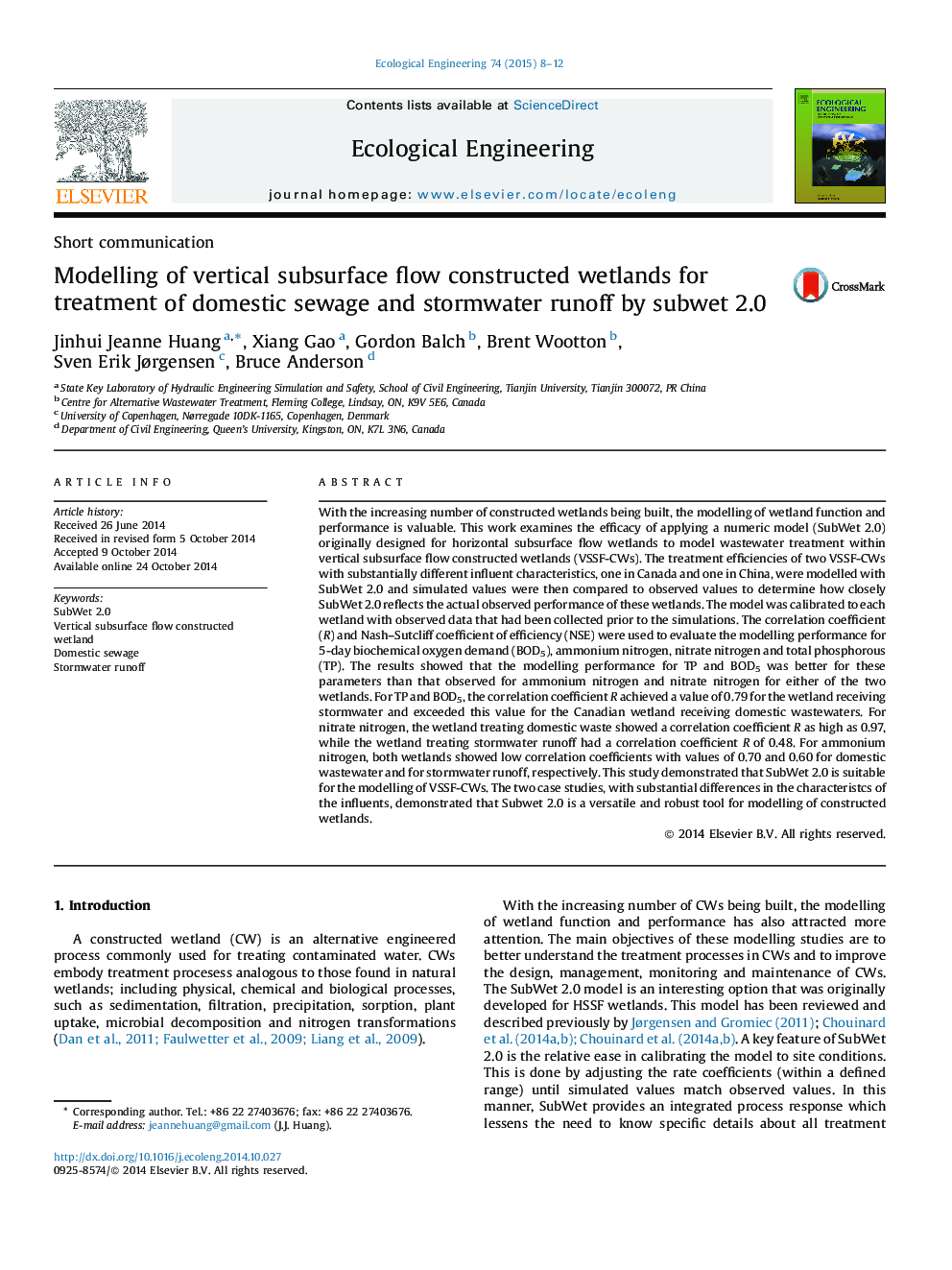| Article ID | Journal | Published Year | Pages | File Type |
|---|---|---|---|---|
| 4389287 | Ecological Engineering | 2015 | 5 Pages |
•This study presents a new approach to model vertical subsurface flow constructed wetland by using Subwet 2.0.•Two case studies with substantially different influent characteristics (stormwater runoff and domestic sewage) were investigated in this study.•For TP and BOD5, the correlation coefficient R for both cases exceed or approach 0.8 (with a value of 0.79 for the case of stormwater runoff); for ammonium, both cases show lower correlation coefficients with values of 0.70 and 0.60 for domestic sewage and for stormwater runoff, respectively.•This study demonstrates that Subwet 2.0 provides a user friendly, robust option for the modelling of vertical flow subsurface wetlands dispite the fact that its original intention was for horizontal subsurface flow wetlands.
With the increasing number of constructed wetlands being built, the modelling of wetland function and performance is valuable. This work examines the efficacy of applying a numeric model (SubWet 2.0) originally designed for horizontal subsurface flow wetlands to model wastewater treatment within vertical subsurface flow constructed wetlands (VSSF-CWs). The treatment efficiencies of two VSSF-CWs with substantially different influent characteristics, one in Canada and one in China, were modelled with SubWet 2.0 and simulated values were then compared to observed values to determine how closely SubWet 2.0 reflects the actual observed performance of these wetlands. The model was calibrated to each wetland with observed data that had been collected prior to the simulations. The correlation coefficient (R) and Nash–Sutcliff coefficient of efficiency (NSE) were used to evaluate the modelling performance for 5-day biochemical oxygen demand (BOD5), ammonium nitrogen, nitrate nitrogen and total phosphorous (TP). The results showed that the modelling performance for TP and BOD5 was better for these parameters than that observed for ammonium nitrogen and nitrate nitrogen for either of the two wetlands. For TP and BOD5, the correlation coefficient R achieved a value of 0.79 for the wetland receiving stormwater and exceeded this value for the Canadian wetland receiving domestic wastewaters. For nitrate nitrogen, the wetland treating domestic waste showed a correlation coefficient R as high as 0.97, while the wetland treating stormwater runoff had a correlation coefficient R of 0.48. For ammonium nitrogen, both wetlands showed low correlation coefficients with values of 0.70 and 0.60 for domestic wastewater and for stormwater runoff, respectively. This study demonstrated that SubWet 2.0 is suitable for the modelling of VSSF-CWs. The two case studies, with substantial differences in the characteristcs of the influents, demonstrated that Subwet 2.0 is a versatile and robust tool for modelling of constructed wetlands.
